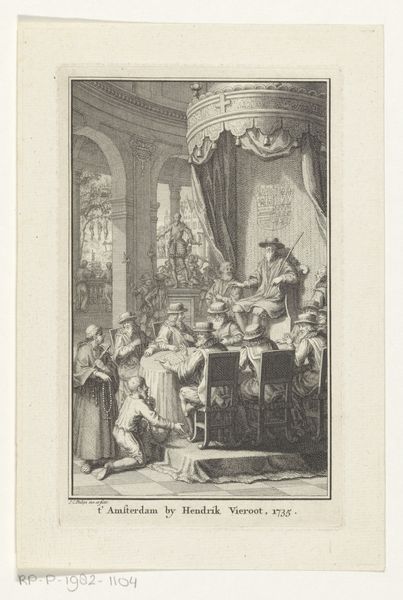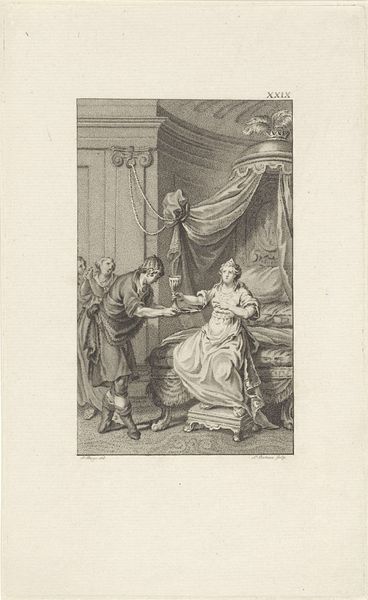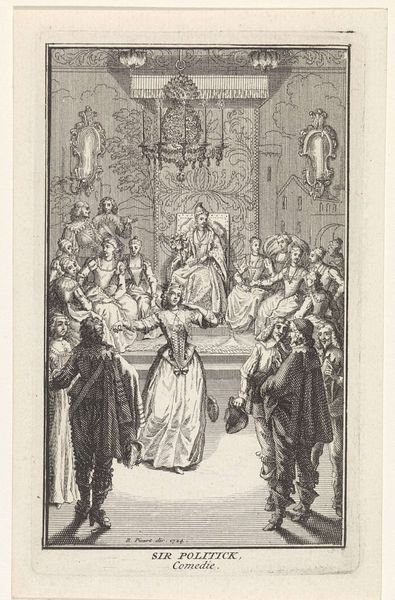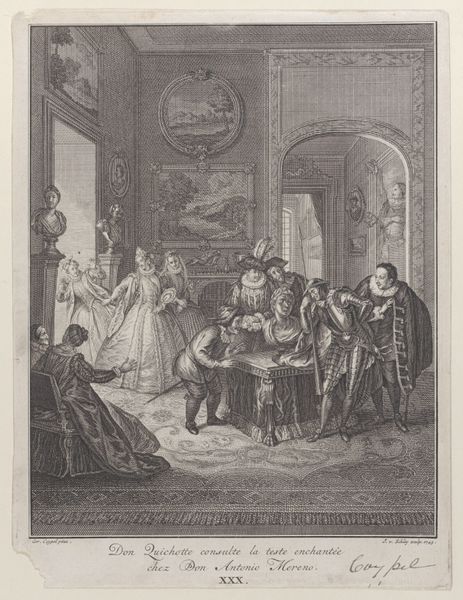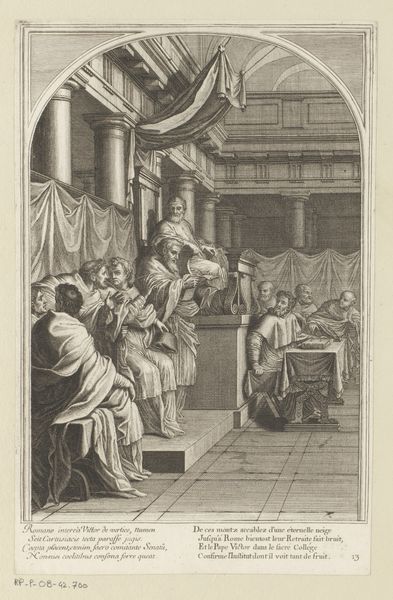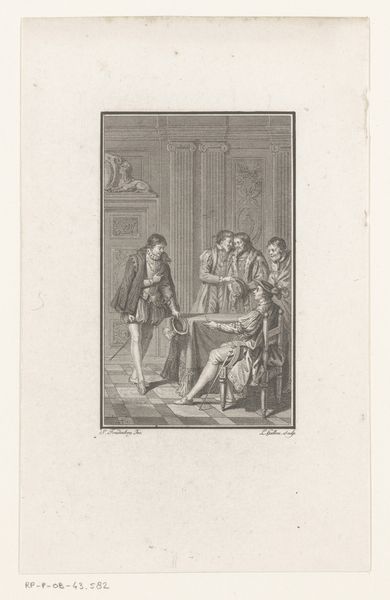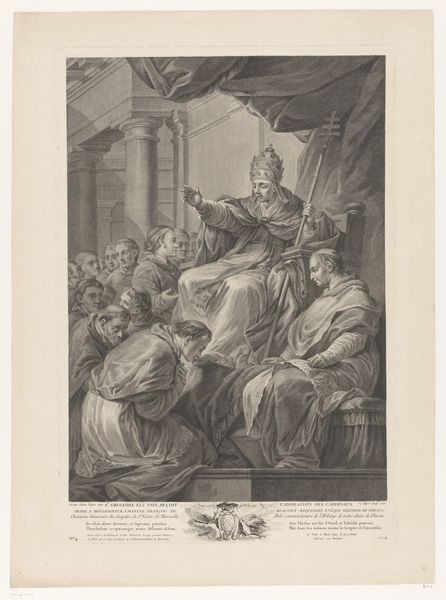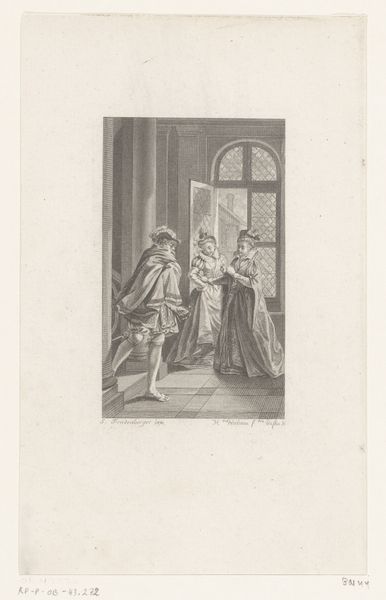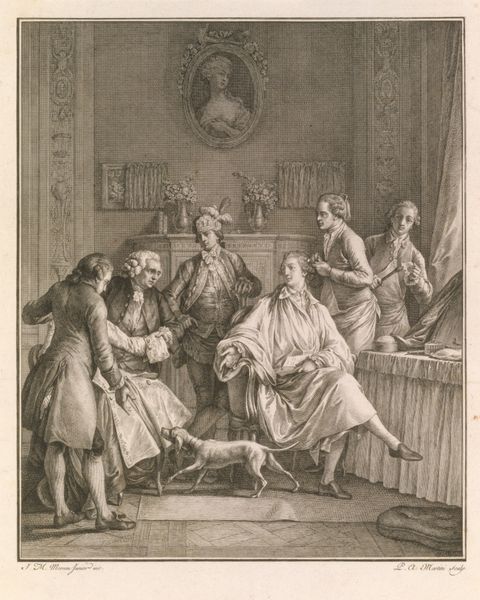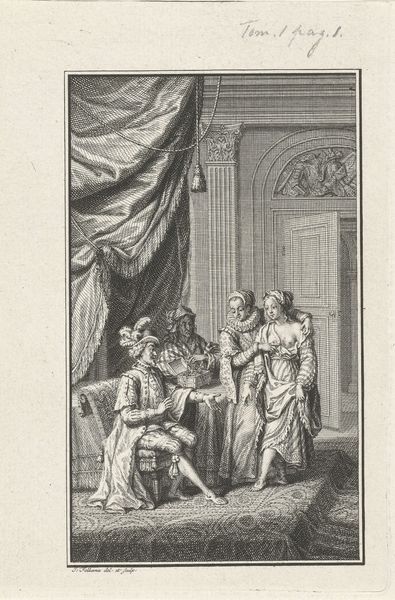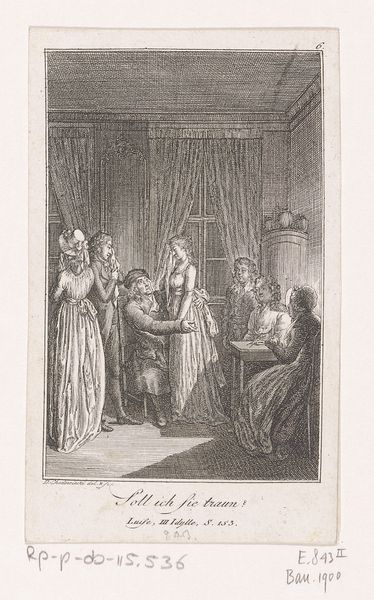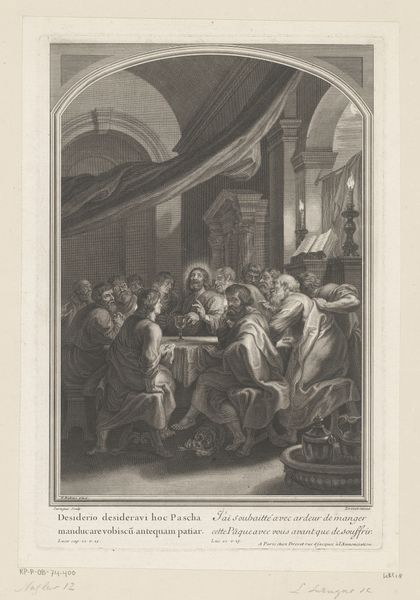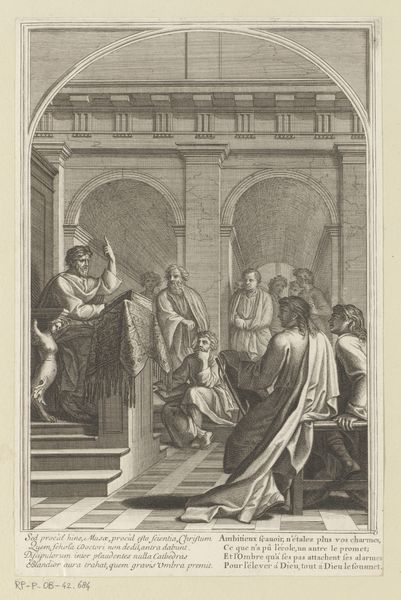
Dimensions: height 161 mm, width 105 mm
Copyright: Rijks Museum: Open Domain
Editor: This engraving by Reinier Vinkeles, made between 1794 and 1796, depicts "Luther voor de Rijksdag te Worms, 1521." It’s at the Rijksmuseum. The detail achieved through engraving is impressive. What catches your eye when you look at this print? Curator: The most compelling aspect to me is understanding the *process* by which this image came into being. Consider the labor involved in producing this print – the skilled hand of the engraver meticulously carving the image onto a metal plate. What kind of tools do you think Vinkeles used? And how did that physical engagement shape the final aesthetic we see here? Editor: Probably some fine needles, but thinking about the labor isn’t something I’d normally do. Does that inform its meaning somehow? Curator: Absolutely. This wasn't just about illustrating a historical event. Prints like these were commodities, meant to be distributed and consumed by a wide audience. So, thinking materially, how did its reproducible nature shape the reception of Luther’s image and ideas in the late 18th century? The paper itself also signals a certain type of consumption and distribution - the material carries with it a social and historical context, don’t you think? Editor: That makes me think about accessibility - how prints like this made historical events more visible. It is on aged, toned paper. The mass production changed accessibility forever! Curator: Precisely. And think about the contrasting materials here. The King is richly dressed, holding the scepter while Luther wears simple monastic clothing. This starkness underlines Luther’s position and resistance. What does that difference say about 18th century production of wealth compared to Luther’s rejection of opulence? Editor: I see, it highlights social and economic differences and maybe implies a challenge to those hierarchies? Curator: Exactly. Seeing art this way definitely allows for new insights and encourages a focus not just on aesthetics but also production methods. It transforms the art appreciation from simply 'seeing' to actively interpreting a thing that reflects production and labor conditions of the artist and patron.
Comments
No comments
Be the first to comment and join the conversation on the ultimate creative platform.
